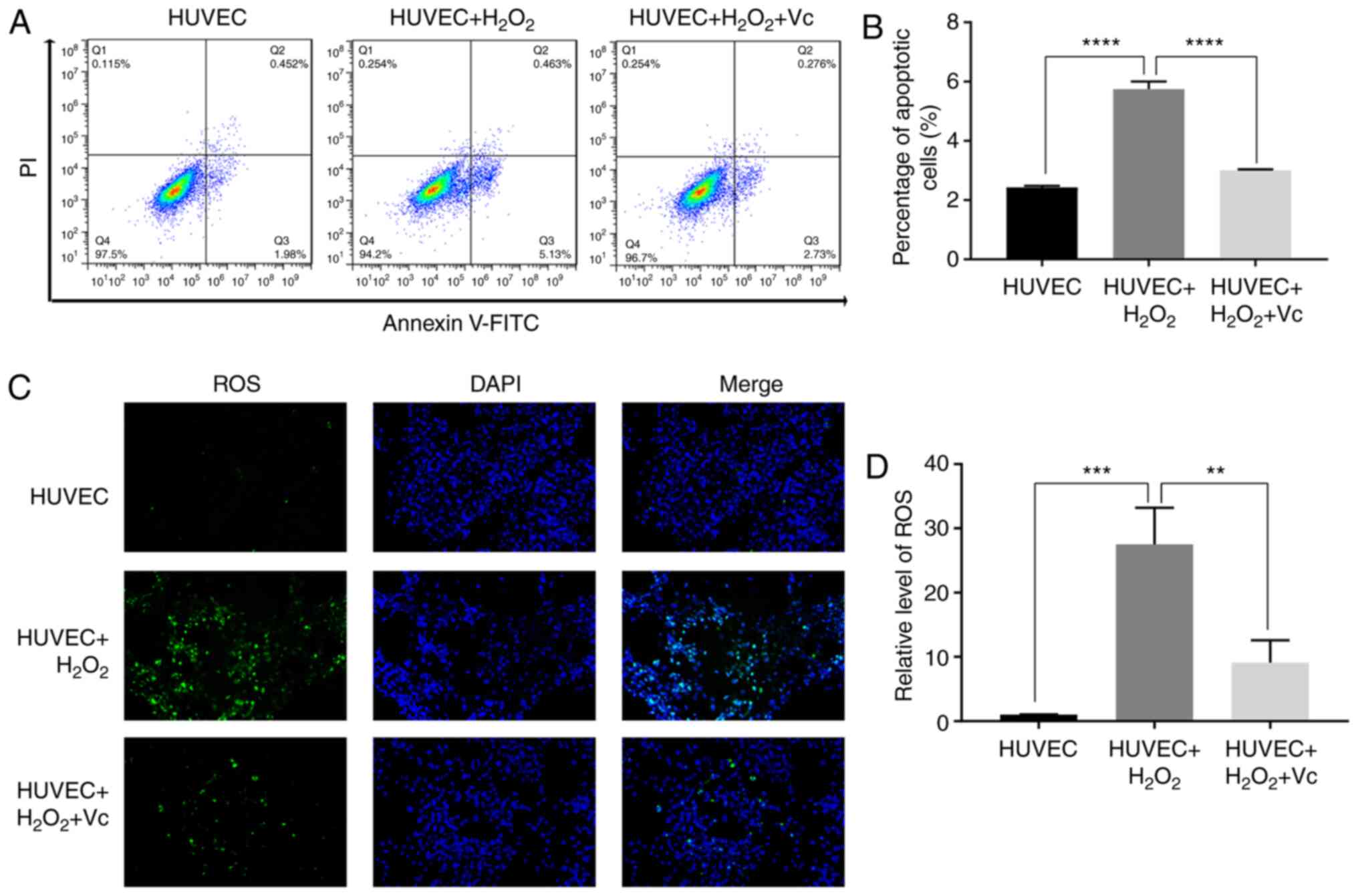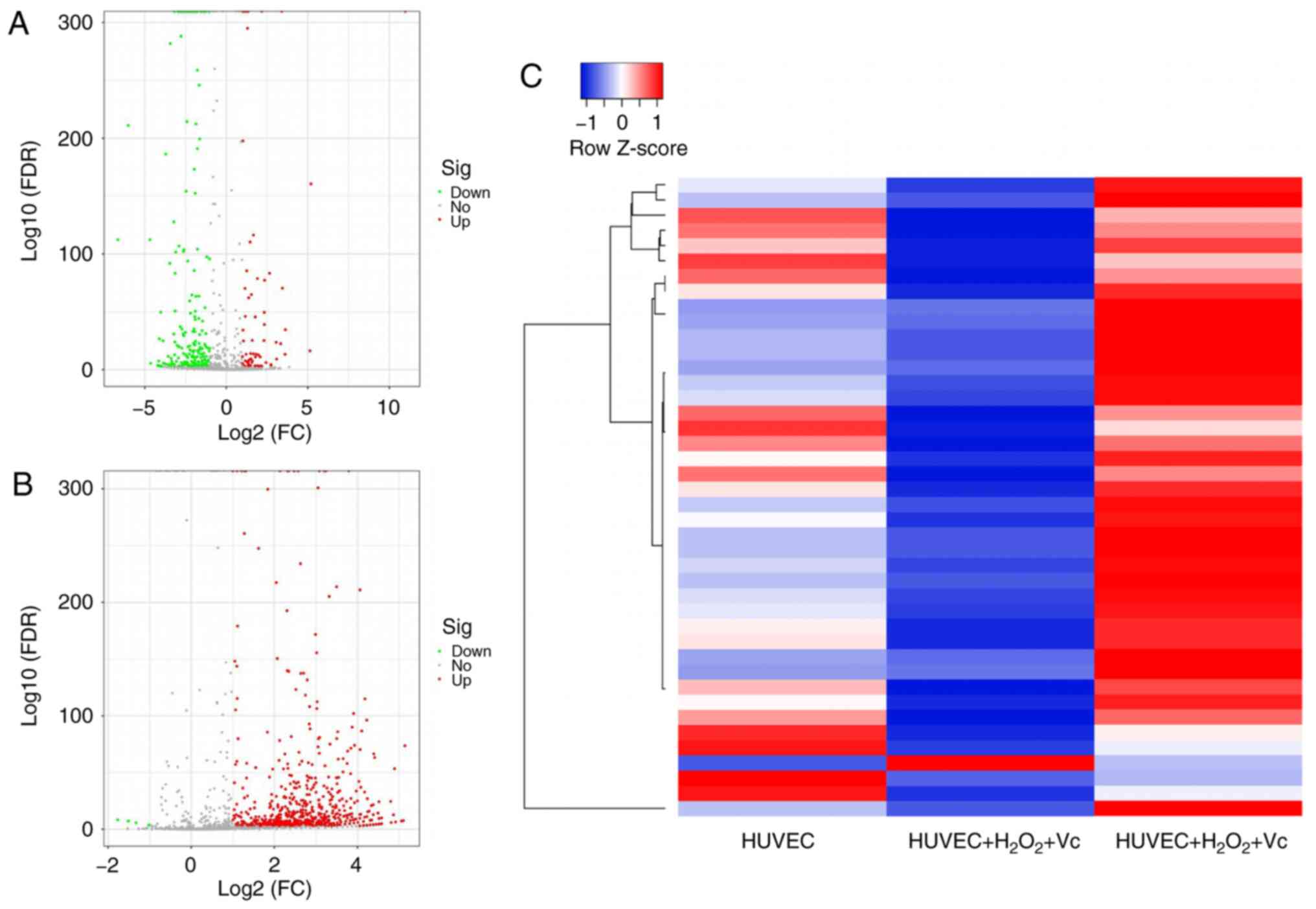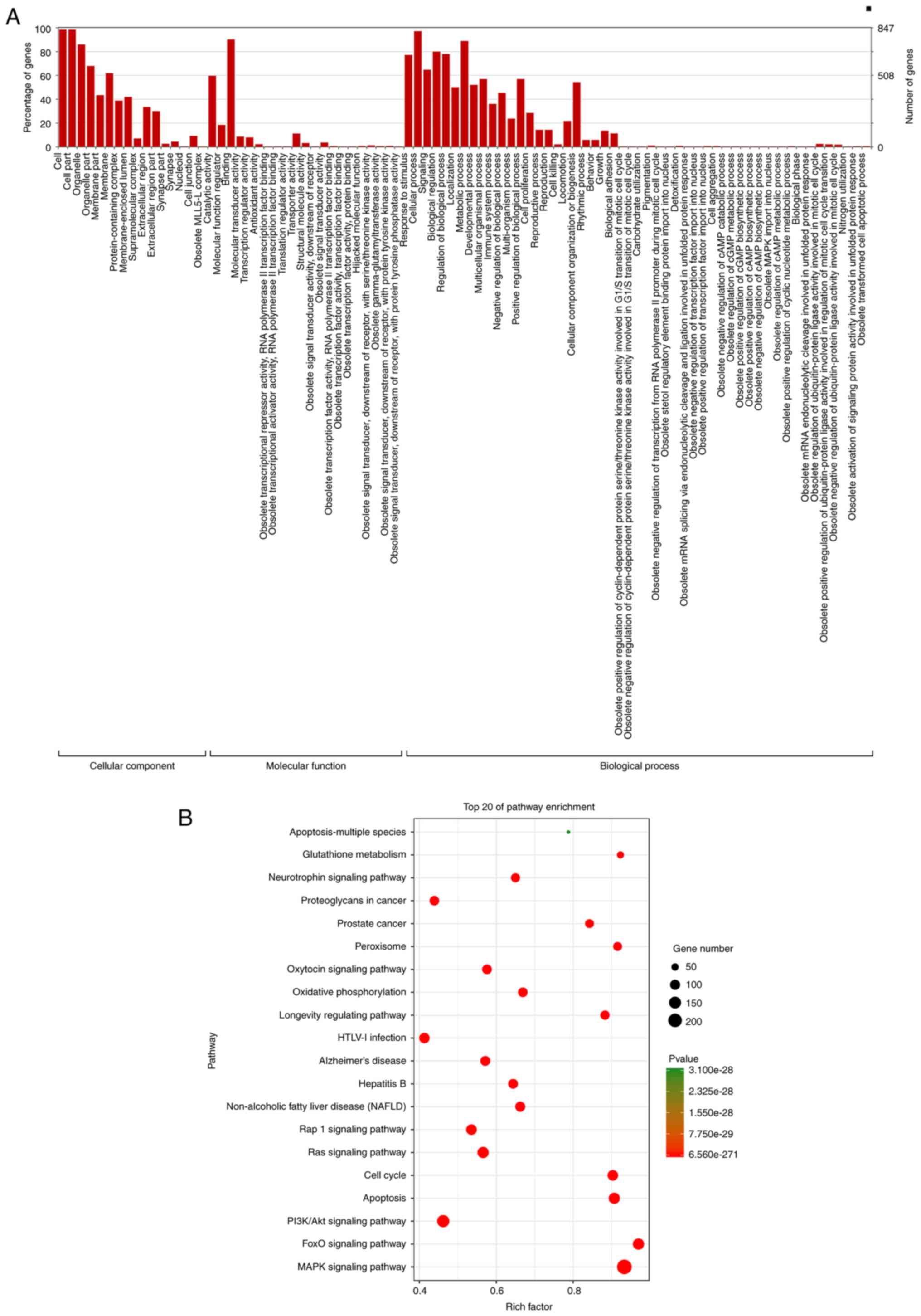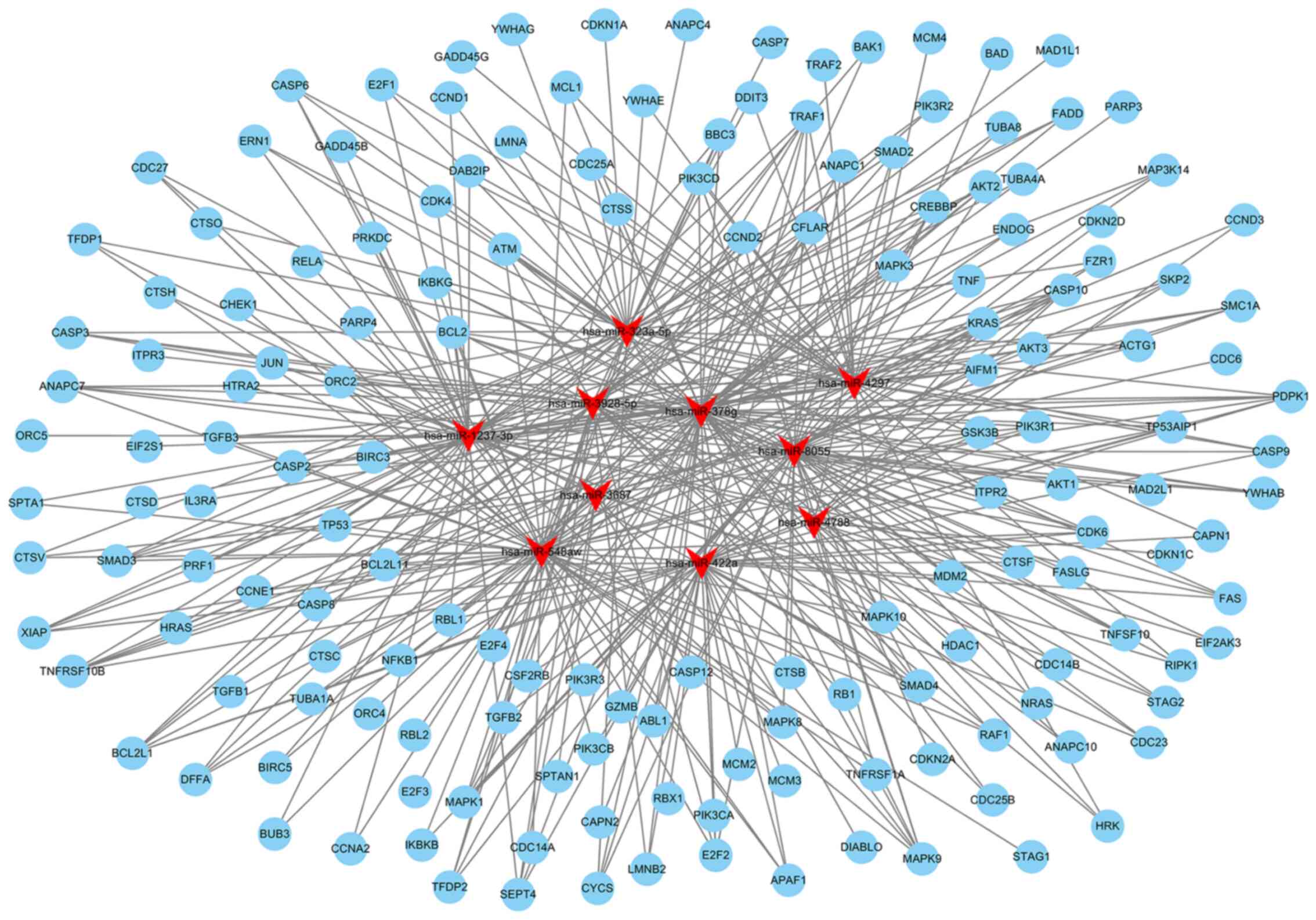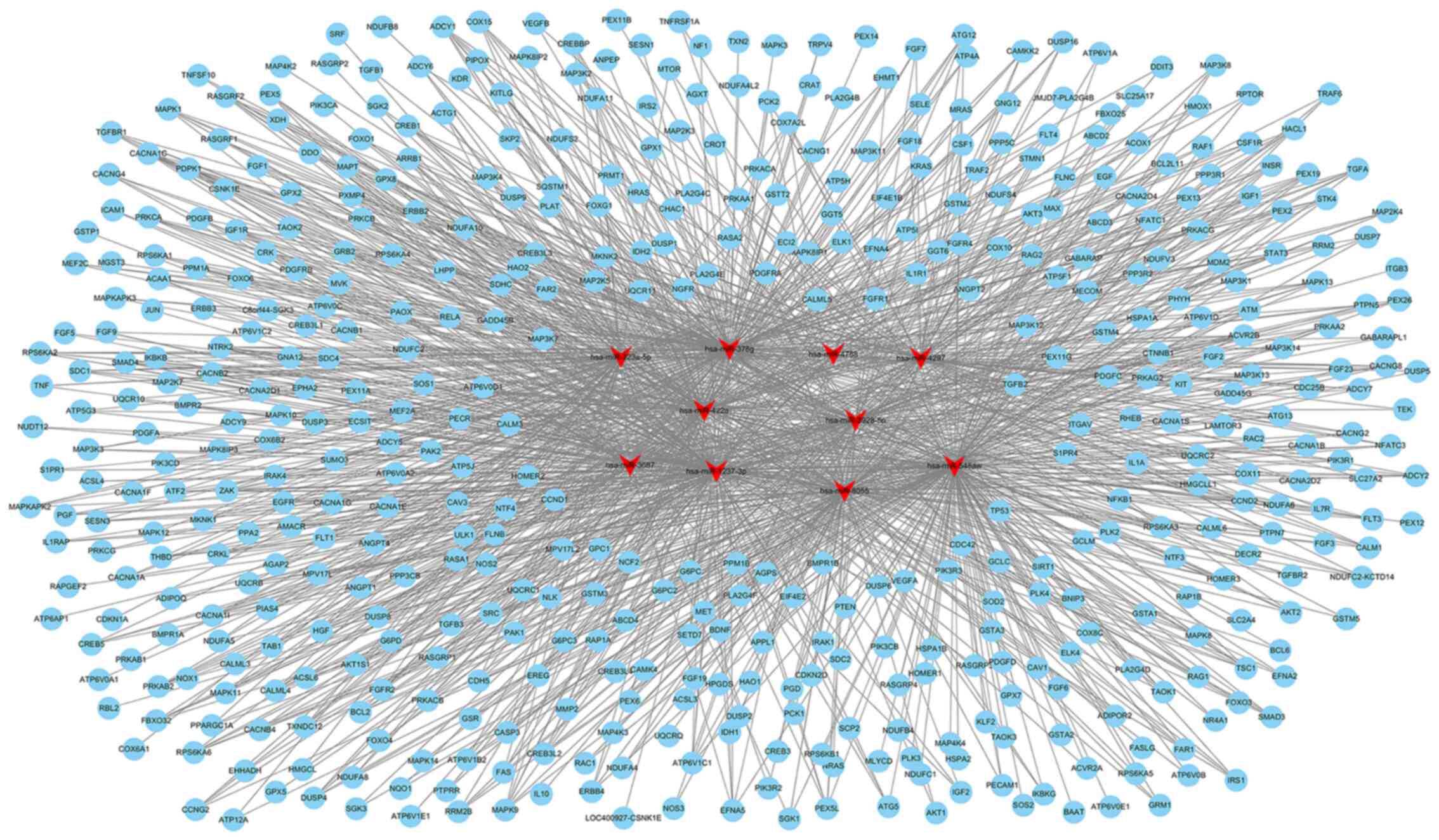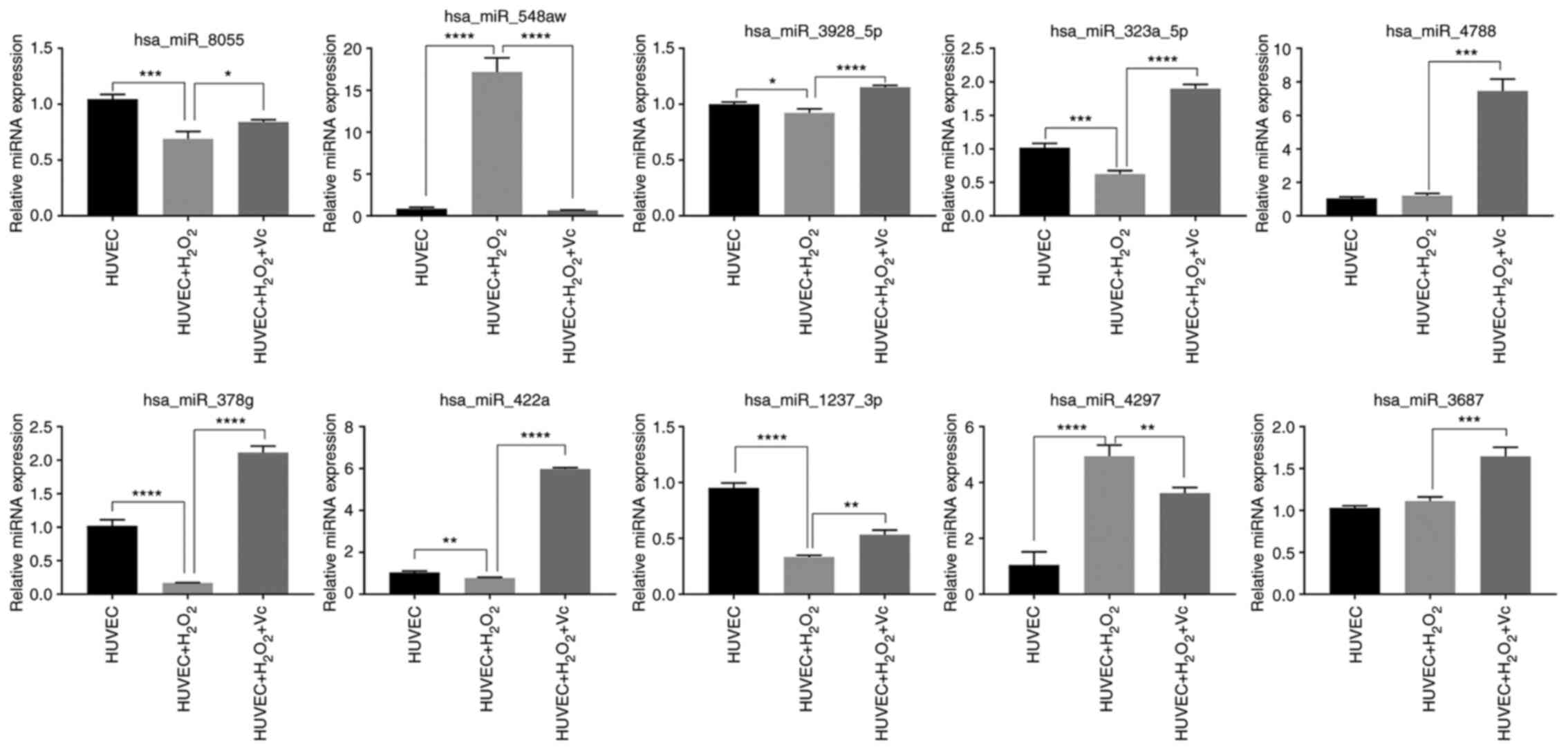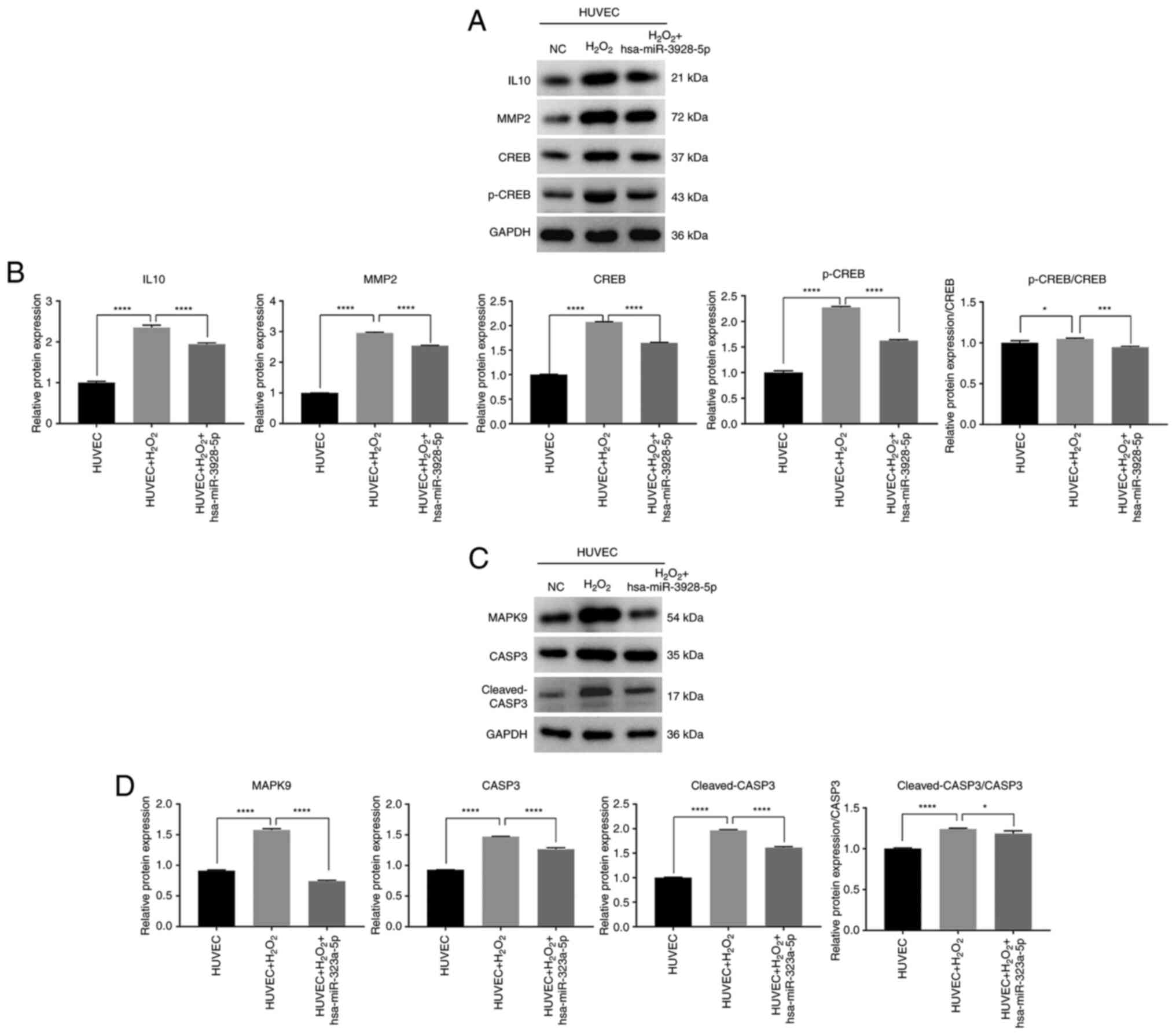|
1
|
Ruano L, Portaccio E, Goretti B, Niccolai
C, Severo M, Patti F, Cilia S, Gallo P, Grossi P, Ghezzi A, et al:
Age and disability drive cognitive impairment in multiple sclerosis
across disease subtypes. Mult Scler. 23:1258–1267. 2017. View Article : Google Scholar
|
|
2
|
Sies H: Oxidative stress: Oxidants and
antioxidants. Exp Physiol. 82:291–295. 1997. View Article : Google Scholar : PubMed/NCBI
|
|
3
|
Zhou C, Yong H and Przedborski S:
Oxidative stress in Parkinson's disease: A mechanism of pathogenic
and therapeutic significance. Ann N Y Acad Sci. 1147:93–104. 2008.
View Article : Google Scholar : PubMed/NCBI
|
|
4
|
Markesbery WR: Oxidative stress hypothesis
in Alzheimer's disease. Free Radic Biol Med. 23:134–147. 1997.
View Article : Google Scholar : PubMed/NCBI
|
|
5
|
Federico A, Morgillo F, Tuccillo C,
Ciardiello F and Loguercio C: Chronic inflammation and oxidative
stress in human carcinogenesis. Int J Cancer. 121:2381–2386. 2007.
View Article : Google Scholar : PubMed/NCBI
|
|
6
|
Tsutsui H, Kinugawa S and Matsushima S:
Oxidative stress and heart failure. Am J Physiol Heart Circ
Physiol. 301:H2181–H2190. 2011. View Article : Google Scholar : PubMed/NCBI
|
|
7
|
Palade F, Alexa ID, Azoicăi D, Panaghiu L
and Ungureanu G: Oxidative stress in atherosclerosis. Rev Med Chir
Soc Med Nat Iasi. 107:502–511. 2003.In Romanian.
|
|
8
|
Kubrak OI, Husak VV, Rovenko BM, Poigner
H, Mazepa MA, Kriews M, Abele D and Lushchak VI: Tissue specificity
in nickel uptake and induction of oxidative stress in kidney and
spleen of goldfish carassius auratus, exposed to waterborne nickel.
Aquat Toxicol. 118-119:88–96. 2012. View Article : Google Scholar : PubMed/NCBI
|
|
9
|
Sosa V, Moliné T, Somoza R, Paciucci R,
Kondoh H and Lleonart ME: Oxidative stress and cancer: An overview.
Ageing Res Rev. 12:376–390. 2013. View Article : Google Scholar
|
|
10
|
Fiaschi T and Chiarugi P: Oxidative
stress, tumor microenvironment, and metabolic reprogramming: A
diabolic liaison. Int J Cell Biol. 2012:7628252012. View Article : Google Scholar : PubMed/NCBI
|
|
11
|
Halliwell B and Gutteridge J: Free
radicals in biology and medicine. J Free Radical Biol Med.
1:331–332. 2007. View Article : Google Scholar
|
|
12
|
Gibbons GH and Dzau VJ: Molecular
therapies for vascular diseases. Science. 272:689–693. 1996.
View Article : Google Scholar : PubMed/NCBI
|
|
13
|
Tang X, Luo YX, Chen HZ and Liu DP:
Mitochondria, endothelial cell function, and vascular diseases.
Front Physiol. 5:1752014. View Article : Google Scholar : PubMed/NCBI
|
|
14
|
Schinzari F, Tesauro M and Cardillo C:
Endothelial and perivascular adipose tissue abnormalities in
obesity-related vascular dysfunction: Novel targets for treatment.
J Cardiovasc Pharmacol. 69:360–368. 2017. View Article : Google Scholar : PubMed/NCBI
|
|
15
|
Yang M and Vousden KH: Serine and
one-carbon metabolism in cancer. Nat Rev Cancer. 16:650–662. 2016.
View Article : Google Scholar : PubMed/NCBI
|
|
16
|
Zhang J, Xia L, Zhang F, Zhu D, Xin C,
Wang H, Zhang F, Guo X, Lee Y, Zhang L, et al: A novel mechanism of
diabetic vascular endothelial dysfunction:
Hypoadiponectinemia-induced NLRP3 inflammasome activation. Biochim
Biophys Acta Mol Basis Dis. 1863:1556–1567. 2017. View Article : Google Scholar : PubMed/NCBI
|
|
17
|
Li S, Tan HY, Wang N, Zhang ZJ, Lao L,
Wong CW and Feng Y: The role of oxidative stress and antioxidants
in liver diseases. Int J Mol Sci. 16:26087–26124. 2015. View Article : Google Scholar : PubMed/NCBI
|
|
18
|
Ahmad KA, Yuan Yuan D, Nawaz W, Ze H, Zhuo
CX, Talal B, Taleb A, Mais E and Qilong D: Antioxidant therapy for
management of oxidative stress induced hypertension. Free Radic
Res. 51:428–438. 2017. View Article : Google Scholar : PubMed/NCBI
|
|
19
|
Chen AY, Lü JM, Yao Q and Chen C:
Entacapone is an antioxidant more potent than vitamin C and vitamin
E for scavenging of hypochlorous acid and peroxynitrite, and the
inhibition of oxidative stress-induced cell death. Med Sci Monit.
22:687–696. 2016. View Article : Google Scholar : PubMed/NCBI
|
|
20
|
Ryan MJ, Dudash HJ, Docherty M, Geronilla
KB, Baker BA, Haff GG, Cutlip RG and Always SE: Vitamin E and C
supple-mentation reduces oxidative stress, improves antioxidant
enzymes and positive muscle work in chronically loaded muscles of
aged rats. Exp Gerontol. 45:882–895. 2010. View Article : Google Scholar : PubMed/NCBI
|
|
21
|
Monacelli F, Acquarone E, Giannotti C,
Borghi R and Nencioni A: Vitamin C, aging and Alzheimer's disease.
Nutrients. 9:6902017.
|
|
22
|
Linster CL and Van Schaftingen E: Vitamin
C. Biosynthesis, recycling and degradation in mammals. FEBS J.
274:1–22. 2007. View Article : Google Scholar : PubMed/NCBI
|
|
23
|
Carr AC and Maggini S: Vitamin C and
immune function. Nutrients. 9:12112017. View Article : Google Scholar :
|
|
24
|
Yun J, Mullarky E, Lu C, Bosch KN,
Kavalier A, Rivera K, Roper J, Chio II, Giannopoulou EG, Rago C, et
al: Vitamin C selectively kills KRAS and BRAF mutant colorectal
cancer cells by targeting GAPDH. Science. 350:1391–1396. 2015.
View Article : Google Scholar : PubMed/NCBI
|
|
25
|
Uetaki M, Tabata S, Nakasuka F, Soga T and
Tomita M: Metabolomic alterations in human cancer cells by vitamin
C-induced oxidative stress. Sci Rep. 5:138962015. View Article : Google Scholar : PubMed/NCBI
|
|
26
|
Yin B, Tang S, Sun J, Zhang X, Xu J, Di L,
Li Z, Hu Y and Bao E: Vitamin C and sodium bicarbonate enhance the
antioxidant ability of H9C2 cells and induce HSPs to relieve heat
stress. Cell Stress Chaperones. 23:735–748. 2018. View Article : Google Scholar : PubMed/NCBI
|
|
27
|
Ting HH, Timimi FK, Haley EA, Roddy MA,
Ganz P and Creager MA: Vitamin C improves endothelium-dependent
vasodilation in forearm resistance vessels of humans with
hyper-cholesterolemia. Circulation. 95:2617–2622. 1997. View Article : Google Scholar : PubMed/NCBI
|
|
28
|
Karajibani M, Hashemi M, Montazerifar F
and Dikshit M: Effect of vitamin E and C supplements on antioxidant
defense system in cardiovascular disease patients in Zahedan,
southeast Iran. J Nutr Sci Vitaminol (Tokyo). 56:436–440. 2010.
View Article : Google Scholar
|
|
29
|
Bagga S, Bracht J, Hunter S, Massirer K,
Holtz J, Eachus R and Pasquinelli AE: Regulation by let-7 and lin-4
miRNAs results in target mRNA degradation. Cell. 122:553–563. 2005.
View Article : Google Scholar : PubMed/NCBI
|
|
30
|
Gao Y, Schug J, McKenna LB, Le Lay J,
Kaestner KH and Greenbaum LE: Tissue-specific regulation of mouse
microRNA genes in endoderm-derived tissues. Nucleic Acids Res.
39:454–463. 2011. View Article : Google Scholar :
|
|
31
|
Xie Q, Chen C, Li H, Xu J, Wu L, Yu Y, Ren
S, Li H, Hua X, Yan H, et al: miR-3687 overexpression promotes
bladder cancer cell growth by inhibiting the negative effect of
FOXP1 on cyclin E2 transcription. Mol Ther. 27:1028–1038. 2019.
View Article : Google Scholar : PubMed/NCBI
|
|
32
|
Kolhe R, Mondal AK, Pundkar C,
Periyasamy-Thandavan S, Mendhe B, Hunter M, Isales CM, Hill WD,
Hamrick MW and Fulzele S: Modulation of miRNAs by vitamin C in
human bone marrow stromal cells. Nutrients. 10:1862018. View Article : Google Scholar :
|
|
33
|
Xu C, Chen Y, Zhang H, Chen Y, Shen X, Shi
C, Liu Y and Yuan W: Integrated microRNA-mRNA analyses reveal OPLL
specific microRNA regulatory network using high-throughput
sequencing. Sci Rep. 6:215802016. View Article : Google Scholar : PubMed/NCBI
|
|
34
|
Lee S, Woo J, Kim YS and Im HI: Integrated
miRNA-mRNA analysis in the habenula nuclei of mice intravenously
self-administering nicotine. Sci Rep. 5:129092015. View Article : Google Scholar : PubMed/NCBI
|
|
35
|
Chambers JC, McGregor A, Jean-Marie J,
Obeid OA and Kooner JS: Demonstration of rapid onset vascular
endothelial dysfunction after hyperhomocysteinemia: An effect
reversible with vitamin C therapy. Circulation. 99:1156–1160. 1999.
View Article : Google Scholar : PubMed/NCBI
|
|
36
|
Heitzer T, Finckh B, Albers S, Krohn K,
Kohlschütter A and Meinertz T: Beneficial effects of alpha-lipoic
acid and ascorbic acid on endothelium-dependent, nitric
oxide-mediated vasodilation in diabetic patients: Relation to
parameters of oxidative stress. Free Radic Biol Med. 31:53–61.
2001. View Article : Google Scholar : PubMed/NCBI
|
|
37
|
Huang J, Agus DB, Winfree CJ, Kiss S, Mack
WJ, McTaggart RA, Choudhri TF, Kim LJ, Mocco J, Pinsky DJ, et al:
Dehydroascorbic acid, a blood-brain barrier transportable form of
vitamin C, mediates potent cerebroprotection in experimental
stroke. Proc Natl Acad Sci USA. 98:11720–11724. 2001. View Article : Google Scholar : PubMed/NCBI
|
|
38
|
Higashi Y, Sasaki S, Nakagawa K, Matsuura
H, Oshima T and Chayama K: Endothelial function and oxidative
stress in reno-vascular hypertension. N Engl J Med. 346:1954–1962.
2002. View Article : Google Scholar : PubMed/NCBI
|
|
39
|
Gao Y, Han Z, Li Q, Wu Y, Shi X, Ai Z, Du
J, Li W, Guo Z and Zhang Y: Vitamin C induces a pluripotent state
in mouse embryonic stem cells by modulating microRNA expression.
FEBS J. 282:685–699. 2015. View Article : Google Scholar
|
|
40
|
Kim SM, Lim SM, Yoo JA, Woo MJ and Cho KH:
Consumption of high-dose vitamin C (1250 mg per day) enhances
functional and structural properties of serum lipoprotein to
improve anti-oxidant, anti-atherosclerotic, and anti-aging effects
via regulation of anti-inflammatory microRNA. Food Funct.
6:3604–3612. 2015. View Article : Google Scholar : PubMed/NCBI
|
|
41
|
Kim YJ, Ku SY, Rosenwaks Z, Liu HC, Chi
SW, Kang JS, Lee WJ, Jung KC, Kim SH, Choi YM, et al: MicroRNA
expression profiles are altered by gonadotropins and vitamin C
status during in vitro follicular growth. Reprod Sci. 17:1081–1089.
2010. View Article : Google Scholar : PubMed/NCBI
|
|
42
|
Park WH: MAPK inhibitors, particularly the
JNK inhibitor, increase cell death effects in
H2O2-treated lung cancer cells via increased
superoxide anion and glutathione depletion. Oncol Rep. 39:860–870.
2018.
|
|
43
|
Samakova A, Gazova A, Sabova N, Valaskova
S, Jurikova M and Kyselovic J: The PI3k/Akt pathway is associated
with angiogenesis, oxidative stress and survival of mesenchymal
stem cells in pathophysiologic condition in ischemia. Physiol Res.
68(Suppl 2): S131–S138. 2019. View Article : Google Scholar : PubMed/NCBI
|
|
44
|
Yao Y, Wang Y, Zhang Y and Liu C: Klotho
ameliorates oxidized low density lipoprotein (ox-LDL)-induced
oxidative stress via regulating LOX-1 and PI3K/Akt/eNOS pathways.
Lipids Health Dis. 16:772017. View Article : Google Scholar : PubMed/NCBI
|
|
45
|
He Z, Li Z, Zhang X, Yin K, Wang W, Xu Z,
Li B, Zhang L, Xu J, Sun G, et al: MiR-422a regulates cellular
metabolism and malignancy by targeting pyruvate dehydrogenase
kinase 2 in gastric cancer. Cell Death Dis. 9:5052018. View Article : Google Scholar : PubMed/NCBI
|
|
46
|
Ge L, Habiel DM, Hansbro PM, Kim RY,
Gharib SA, Edelman JD, Königshoff M, Parimon T, Brauer R, Huang Y,
et al: miR-323a-3p regulates lung fibrosis by targeting multiple
profibrotic pathways. JCI Insight. 1:e903012016. View Article : Google Scholar : PubMed/NCBI
|
|
47
|
Wang JK, Guo Q, Zhang XW, Wang LC, Liu Q,
Tu PF, Jiang Y and Zeng KW: Aglaia odorata Lour. extract inhibit
ischemic neuronal injury potentially via suppressing
p53/Puma-mediated mitochondrial apoptosis pathway. J
Ethnopharmacol. 248:1123362020. View Article : Google Scholar
|
|
48
|
Cai ZJ, Lee YK, Lau YM, Ho JC, Lai WH,
Wong NL, Huang D, Hai JJ, Ng KM, Tse HF, et al: Expression of
Lmna-R225X nonsense mutation results in dilated cardiomyopathy and
conduction disorders (DCM-CD) in mice: Impact of exercise training.
Int J Cardiol. 298:85–92. 2020. View Article : Google Scholar
|
|
49
|
Ibrahim RY, Mansour SM and Elkady WM:
Phytochemical profile and protective effect of Ocimum basilicum
aqueous extract in doxorubicin/irradiation-induced testicular
injury. J Pharm Pharmacol. 72:101–110. 2020. View Article : Google Scholar
|
|
50
|
Hirai T, Konishi Y, Mizuno S, Rui Z, Sun Y
and Nishiwaki K: Differential effects of sevoflurane on the growth
and apoptosis of human cancer cell lines. J Anesth. 34:47–57. 2020.
View Article : Google Scholar
|
|
51
|
Tang Y, Liu J, Yan Y, Fang H, Guo C, Xie R
and Liu Q: 1-25-dihydroxyvitamin-D3 promotes neutrophil apoptosis
in periodontitis with type 2 diabetes mellitus patients via the
p38/MAPK pathway. Medicine (Baltimore). 97:e139032018. View Article : Google Scholar
|
|
52
|
Li L, Zhang M, Chen W, Wang R, Ye Z, Wang
Y, Li X and Cai C: LncRNA-HOTAIR inhibition aggravates oxidative
stress-induced H9c2 cells injury through suppression of MMP2 by
miR-125. Acta Biochim Biophys Sin (Shanghai). 50:996–1006. 2018.
View Article : Google Scholar
|
|
53
|
Blascke de Mello MM, Parente JM, Schulz R
and Castro MM: Matrix metalloproteinase (MMP)-2 activation by
oxidative stress decreases aortic calponin-1 levels during
hypertrophic remodeling in early hypertension. Vascul Pharmacol.
116:36–44. 2019. View Article : Google Scholar
|
|
54
|
Kim SJ, Park YS, Paik HD and Chang HI:
Effect of anthocyanins on expression of matrix metalloproteinase-2
in naproxen-induced gastric ulcers. Br J Nutr. 106:1792–1801. 2011.
View Article : Google Scholar : PubMed/NCBI
|
|
55
|
Iyer SS and Cheng G: Role of interleukin
10 transcriptional regulation in inflammation and autoimmune
disease. Crit Rev Immunol. 32:23–63. 2012. View Article : Google Scholar : PubMed/NCBI
|
|
56
|
Herkel J, Schrader J, Erez N, Lohse AW and
Cohen IR: Activation of the Akt-CREB signalling axis by a
proline-rich heptapeptide confers resistance to stress–induced cell
death and inflammation. Immunology. 151:474–480. 2017. View Article : Google Scholar : PubMed/NCBI
|















